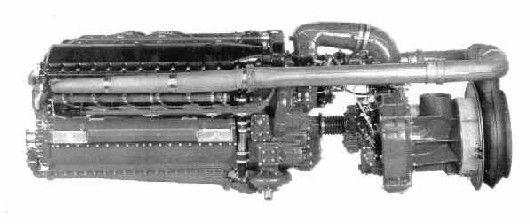Allison V-1710

Allison V-1710

That connection at the crank is NOT turbine power going back to the crankshaft, That’s one stage of this compound turbine POWERED by the crank. you can see the boost side tubing running to the intake side top rear of the engine, as well as the exhaust side pipes running to the back of the unit from both sides of the engine to a “t” joint. The crank drives an secondary turbo charger which compresses the compressed air from the primary turbocharger at the rear.